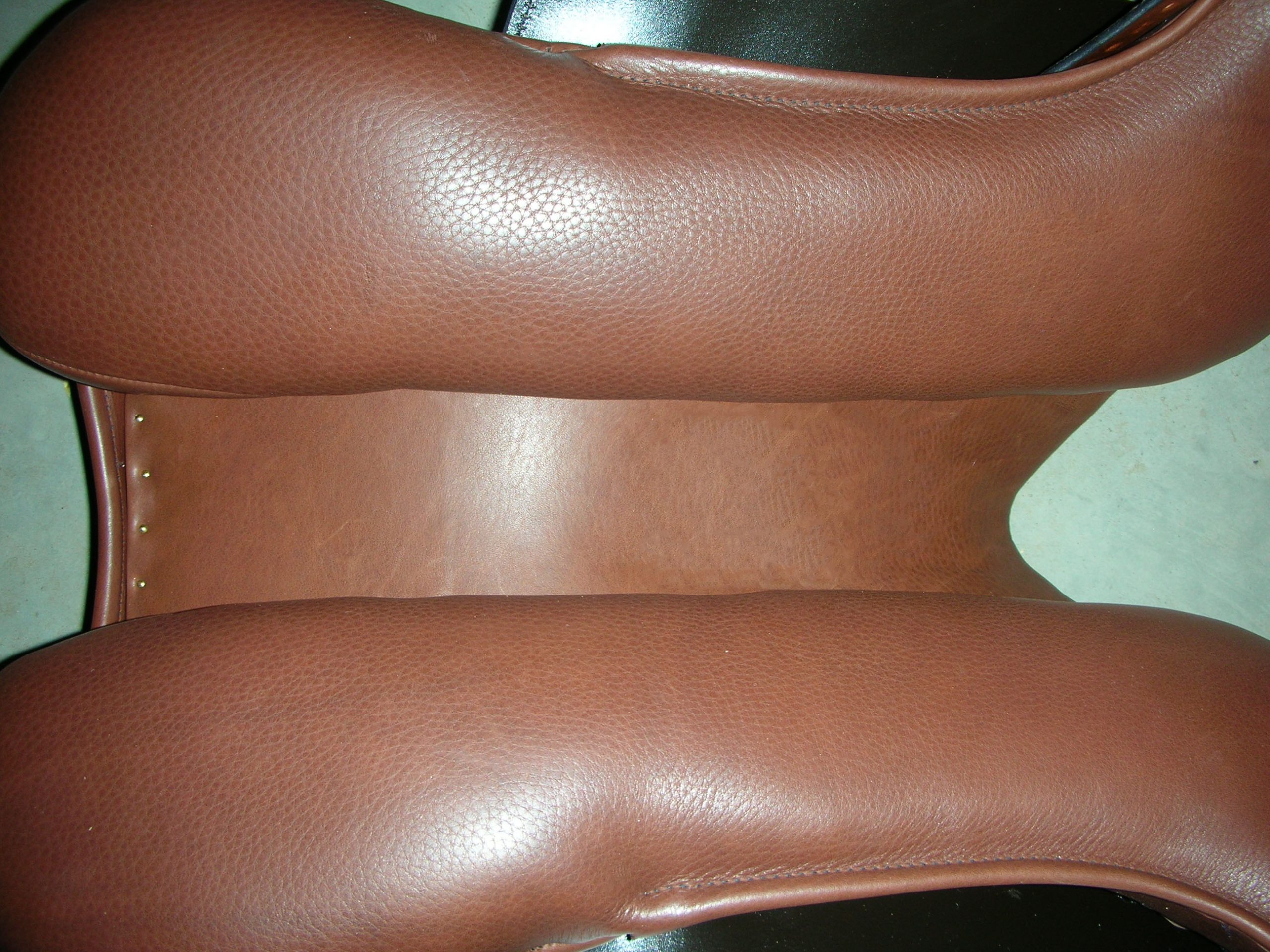SADDLE INFORMATION & Saddle Problems
EQUESTOR’S SADDLES CONTRIBUTE TO THE WELL-BEING OF THE HORSE.
The starting point for every design is the flexible tree that follows the backline in the longitudinal direction for as long as possible for optimal bearing capacity. Up to twice the support surface ensures better pressure distribution. Enormous shoulder freedom, plenty of space for the spine and shock-absorbing material in the cushions ensure that the horse can actually perform without hindrance.
Virtually all horses respond positively to this overall pressure relief and increased range of motion.
Saddle problems
Few saddles really lie well on the horse for which they are intended. Careful estimates indicate that about 80% of the saddles used cause problems.
Causes are: too narrow in the withers area; pillows padded too hard or asymmetrically; too narrow a chamber (vertebrae come into contact with cushions when bent); bridge formation (saddle does not bear in the middle); point load in the withers or kidney area (imbalance). For example, a saddle can cause disproportionate pressure on a small surface. These pressure points are very painful and always cause problems.
Pressure points
Pressure points are created -the word says it all- by too much pressure, so rider weight, on too small a surface. You eventually recognize them by the white hair. But then the damage has already been done. It starts with small swellings that disappear quickly. But in the meantime, the tissue is systematically damaged. And will eventually die: muscle atrophy. The exact opposite of what we want to achieve with training. You see them a lot, of those horses with a so-called high, sharp withers. Ten to one that the saddle is the culprit.
Imagine how much pain a horse suffers when the front bridge of the saddle is too narrow and there is a pinch effect under the tree tips in that withers area. When the saddle eventually falls into the resulting potholes, many people react: “but the saddle fits exactly” .. Well, now it does. The body has adapted in a negative way. If we give it space again it will recover in most cases.
Damaged vertebrae
Unfortunately, many saddles have a much too narrow chamber (the space between the cushions) and if the cushions are also filled too hard, you have the dolls dancing. Because with every bend you ask of your horse, one of the two cushions will collide with his vertebrae. A very painful and damaging situation that leads to serious problems. Too often, the horse’s inability to do what we ask of it is interpreted as reluctance. And punished.
RECOGNIZE
A horse that turns away from you when you arrive with the saddle gives a signal. A horse that bites with girth too. Running away with take-off is one of them. And what about flight behavior under saddle. Run faster and faster. Or sometimes even prancing as the ultimate refusal. It could all very well have something to do with the saddle. There are even horses that (want to) drop themselves with girth, each one of which is signs that we should not ignore.
Few saddles really lie well on the horse for which they are intended. Careful estimates indicate that about 80% of the saddles used cause problems.
Causes are: too narrow in the withers area; pillows padded too hard or asymmetrically; too narrow a chamber (vertebrae come into contact with cushions when bent); bridge formation (saddle does not bear in the middle); point load in the withers or kidney area (imbalance). For example, a saddle can cause disproportionate pressure on a small surface. These pressure points are very painful and always cause problems.
A GOOD SADDLE
A saddle that fits your horse well has a few specific, but also a number of general characteristics. Note the width of the room. At least 3, but preferably 4 fingers should fit between the pillows. The pillows should be wide and soft. And carry it everywhere. Of course, a saddle at the front should never rest on the withers. And the angle of inclination of the boom points (you can see them hidden in the bottom flap) must be equal to that of the shoulder blade of your horse. Just put two whips along it. If they intersect, it is wrong!
Of course you also have to sit comfortably on your saddle. And fit in well. Because no matter how good a saddle is, if you can’t sit on it, your horse still has a problem.
SEAT PROBLEMS CHECKLIST
- Horse turns away when you arrive with saddle
- Bite with saddling and / or girthing
- Resists transitions
- Will / cannot bend
- Will / cannot stretch
- Difficulty with canter changes
- Loses muscle tissue
- Has painful back muscle and / or vertebrae
- Has painful muscle with the withers
And then there are of course the visible damage such as open withers, pressures and white hair.
In case of one or more of the above problems, it is advisable to consult an expert saddle specialist with extensive experience.



